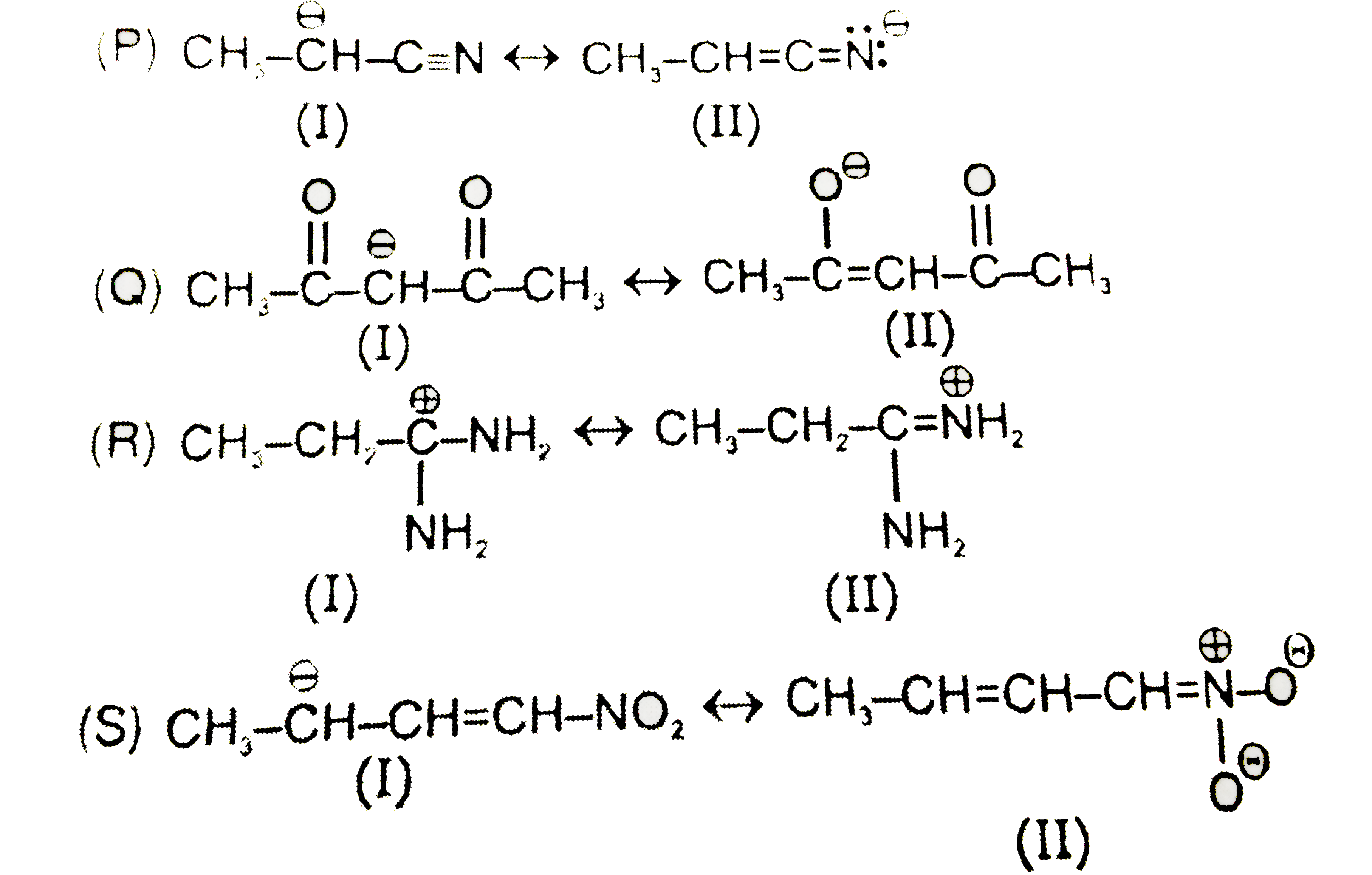Give reasons why the following two Resonance structures cannot be the major cantributors to the real structures of CH3COOCH3,
O− O− | | +CH3−C+−O−CH3↔CH3−C=O−CH3 (I) (II)
To determine why the two given resonance structures for CH₃C(=O)OCH₃ (methyl acetate) cannot be major contributors to the real structure, we need to analyze the stability of each structure based on the octet rule and the electronegativity of the atoms involved.
1. Identify the Resonance Structures:
The two resonance structures provided are:
- Structure I: CH₃−C+(O−)=O
- Structure II: CH₃−C=O−O−
2. Check the Octet Rule:
- In Structure I:
- The first carbon (attached to three hydrogens) has 8 electrons (octet complete).
- The second carbon (attached to the oxygen) has only 6 electrons (octet not complete).
- The oxygen with a negative charge has 8 electrons (octet complete).
- In Structure II:
- The first carbon has 8 electrons (octet complete).
- The second carbon has 8 electrons (octet complete).
- The oxygen with a negative charge has 8 electrons (octet complete).
- However, the oxygen that is double bonded to carbon also carries a positive charge, which is less stable.
3. Evaluate Charge Distribution:
- In Structure I, the positive charge resides on carbon, which is less electronegative than oxygen. This is unfavorable because more electronegative atoms should ideally carry negative charges.
- In Structure II, the negative charge on the oxygen is acceptable, but the presence of a positive charge on the oxygen is unfavorable due to its higher electronegativity compared to carbon.
4. Stability Considerations:
- A major contributor to resonance structures is one that minimizes charge separation and has complete octets.
- Structure I has an incomplete octet on carbon, making it less stable.
- Structure II has charge separation (positive charge on oxygen), which is not favorable.
5. Conclusion:
- Both structures are not major contributors because:
- Structure I has an incomplete octet on carbon, leading to instability.
- Structure II has unfavorable charge separation with a positive charge on a more electronegative atom (oxygen).
Final Answer:
The resonance structures cannot be major contributors because:
- Structure I has an incomplete octet on carbon, making it unstable.
- Structure II has unfavorable charge separation, with a positive charge on oxygen, which is less stable due to electronegativity considerations.
The two resonance structures provided are:
- Structure I: CH₃−C+(O−)=O
- Structure II: CH₃−C=O−O−
- In Structure I:
- The first carbon (attached to three hydrogens) has 8 electrons (octet complete).
- The second carbon (attached to the oxygen) has only 6 electrons (octet not complete).
- The oxygen with a negative charge has 8 electrons (octet complete).
- In Structure II:
- The first carbon has 8 electrons (octet complete).
- The second carbon has 8 electrons (octet complete).
- The oxygen with a negative charge has 8 electrons (octet complete).
- However, the oxygen that is double bonded to carbon also carries a positive charge, which is less stable.
- In Structure I, the positive charge resides on carbon, which is less electronegative than oxygen. This is unfavorable because more electronegative atoms should ideally carry negative charges.
- In Structure II, the negative charge on the oxygen is acceptable, but the presence of a positive charge on the oxygen is unfavorable due to its higher electronegativity compared to carbon.
- A major contributor to resonance structures is one that minimizes charge separation and has complete octets.
- Structure I has an incomplete octet on carbon, making it less stable.
- Structure II has charge separation (positive charge on oxygen), which is not favorable.
- Both structures are not major contributors because:
- Structure I has an incomplete octet on carbon, leading to instability.
- Structure II has unfavorable charge separation with a positive charge on a more electronegative atom (oxygen).
The resonance structures cannot be major contributors because:
- Structure I has an incomplete octet on carbon, making it unstable.
- Structure II has unfavorable charge separation, with a positive charge on oxygen, which is less stable due to electronegativity considerations.
Similar Questions
Knowledge Check
- Question 1 - Select One
In the following sets of resonating structure, lable the major contributors towards resonance hybrid.
 AII, II, I, IIBII, II, II, ICII, II, II, IIDI, I, II, I
AII, II, I, IIBII, II, II, ICII, II, II, IIDI, I, II, I - Question 2 - Select One
Which of the following resonating structure of N2O is the most contributing ?
AN≡N−OBN−N≡OCN=N−ODN−N=O - Question 3 - Select One
The most stable resonating structure of
CH3−O−CH=CH isACH3−⋅⋅O⋅⋅−CΘH−⊕CH2BCH3−⊕O=CH−⊕CH2CCH3−⊕O⋅⋅=CH−⊕CH2DCH3−O=⊕CH−⊕CH2
Give reasons for the following:
H2O has bent structure.View SolutionWrite resonating structures of CH3COO− ion.
View SolutionWrite two resonance structure of N2O that satisfy the octet rule.
View SolutionGive the resonating structures of NO2 and N2O5.
View SolutionGive the resonating structures of NO2 and N2O5.
View Solution



 .
.